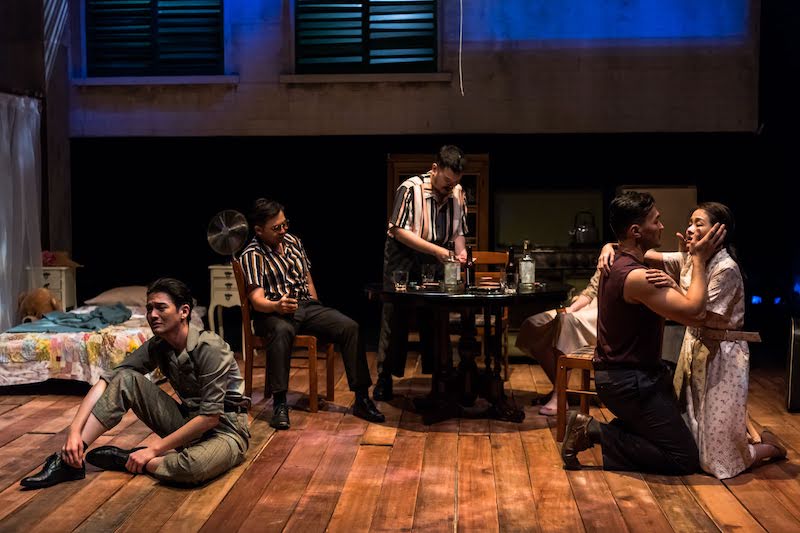
Stanley and Blanche, played by the talented John Tan and Ruby Faye (All photos: klpac)
“Bang!” A raucous sound that mimicked a gunshot reverberated through the hall of Pentas 2. Several pairs of shoulders shot up in syncopation as protagonist Blanche Dubois (played by the talented Ruby Faye) recounted the memory of her late husband’s death.
After lying to everyone about her past since her arrival, Blanche finally uncovered the truth she had been hiding to Mitch (Tan Yi Lang) — about the night her late husband committed suicide after she discovered his hidden sexual orientation.
This pivotal scene may be familiar to those who have watched the Pulitzer-winning play written by Tennessee Williams on Broadway, or the critically acclaimed play film directed by Ella Kazan in 1951. However, this staging by Joe Hasham is not as you know it, as the entire show is performed in Mandarin.
_dsc5792.jpg

In fact, this production, which revolves around themes of loss and loneliness, is Hasham’s third rendition of the theatre classic. The first was performed by Ramona Rahman and Andrew Leci for The Actor’s Studio in 1993; the second was a dance version featuring two Japanese prima ballerinas at klpac in 2014. Although Hasham does not speak Mandarin at all, he had enlisted the expertise of assistant director Amelia Tan — a full-time theatre practitioner the director had worked on several occasions — to bring the play to life.
Watching the show in Mandarin may be a surreal (or challenging) experience for those who already know the play by heart. But the characters will resonate with theatregoers nonetheless. Our favourite was Stanley Kowalski, Stella’s husband, whose polarising character made us either despise or identify with his actions. While Tan brilliantly portrayed the crude and repulsive aspect of Stanley, he also showed his softer side that persuaded Stella to repeatedly go back to him.
This unusual delivery of one of America’s most iconic plays panned out surprisingly well as it was stirring enough to leave an indelible impression, despite being performed in a completely different language. Having said that, non-Mandarin speaking audience may find it difficult to appreciate the show as one’s gaze will need to shuffle between the English subtitles on the screen as well as the drama unfolding on the stage.
streetcar_2.jpeg

The stage was nothing less than impressive though, as designer Ziying Chua and sound designer Christopher Higgs dreamt up a set that immediately transports one back in time to the 1940s. Depictions of the slums in French Quarter, New Orleans, as well as Blanche’s poignant recounts of her late husband’s death were accentuated with gripping sound effects. Not forgetting, too, was the smoking scene on stage to augment the atmosphere.
For those who are unfamiliar with the play, A Streetcar Named Desire follows the downfall of Blanche Dubois, a Southern Belle who had lost everything and moved into a dilapidated flat to live with her gentle and submissive sister, Stella, and brother-in-law, Stanley. She then befriends Stanley’s friend, Mitch, but her past soon catches up with her as her lies begin to unravel.
Catch the show at Pentas 2, klpac. Until Mar 27. Tickets are priced at RM80. Click here to purchase.


